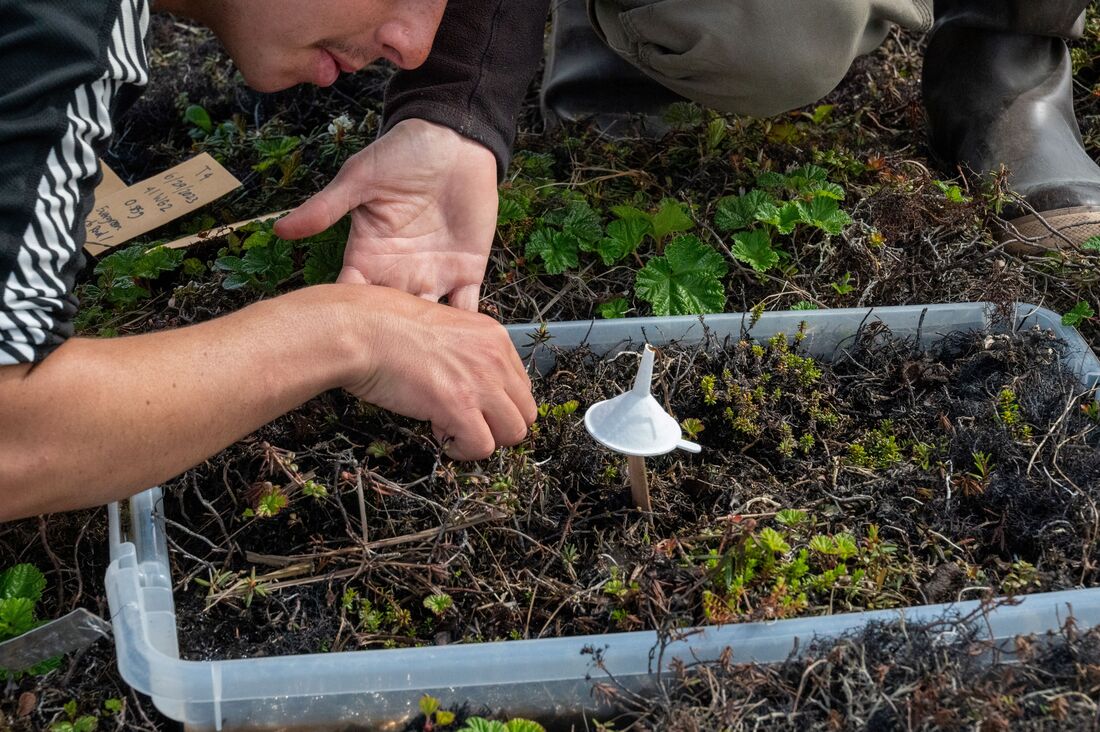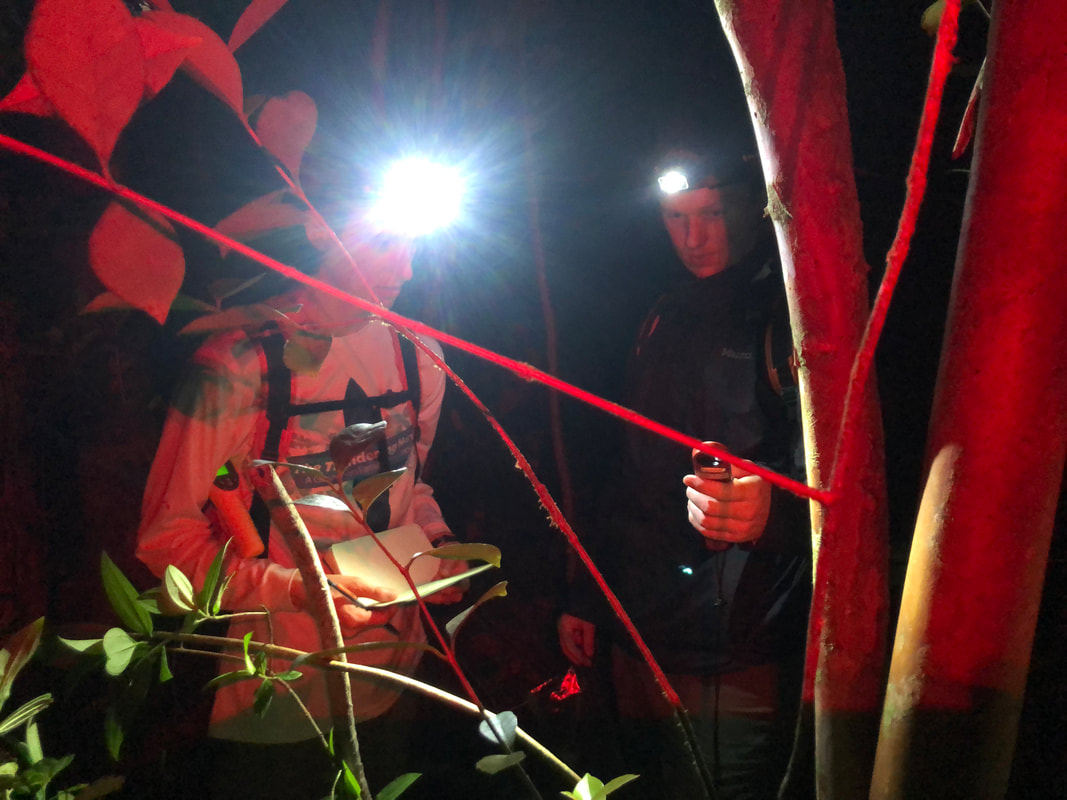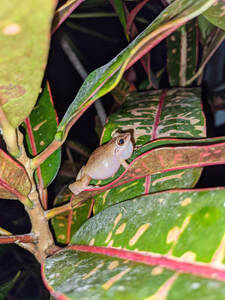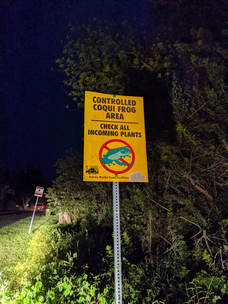|
My research is focused on species interactions and subsequent impacts on ecosystem processes, especially focused on the issues of climate change and invasive species. My climate change research in Alaska and Utah focuses on how changing ecosystems may feedback to influence future conditions, such as native plant communities and greenhouse gas fluxes. My invasive species research mostly focuses on amphibians and reptiles, and in particular the coqui frog invasion in Hawaii.
Climate change research, Alaska: I am currently working on three NSF-funded projects in Alaska. The first is a project with Drs. Joshua Leffler and Kathy Kelsey investigating the effects of climate change on vegetation communities and carbon flux. The project is titled "Climate-induced sea-level rise, warming and herbivory effects on vegetation and greenhouse gas emission in coastal western Alaska" (2021-2025). In this project, we are investigating how flooding, warming and changing herbivory patterns will influence western, coastal Alaska into the future. I am also working on a project with these same PIs to investigate the impacts of Typhoon Merbok on vegetation communities and carbon flux (2022-2024). I am finishing a project with Dr. Trisha Atwood (PI) and Dr. Bonnie Waring (co-PI). We received NSF funding for our project on "Understanding the effects of above- and belowground linkages on carbon cycling in a high latitude coastal wetland" (2020-2024). I will provide updates on our findings as we get them. Here I summarize some work I've already completed in Alaska. With colleagues at the University of Alaska Anchorage, USGS Alaska Science Center, and South Dakota State University, I worked on an NSF-funded project to study how climate change affects migratory goose arrival time and the start of the growing season in the Yukon-Kuskokwim Delta, and how this in turn influences vegetation traits and nutrient cycling (2013-2018). Geese that breed and molt in the Arctic are extremely selective for high quality (high nitrogen) forage. We conducted a highly manipulative experiment where we altered the timing of goose arrival (foraging) and the start of the growing season to investigate how these factors influence C and N cycling, the quality of forage and whether geese mediate the effects of climate change by altering soil and plant nutrition, vegetation canopy traits, and plant demography. We found that the timing of goose arrival played a greater role than the timing of the growing season in influencing plant traits, forage quality, N availability in the soil, C-sink strength, and greenhouse gas emissions. More specifically, early season grazing reduces above- and belowground biomass, increases forage quality, and increases methane emissions, but decreases the overall C-sink strength of the system. Late season grazing increased vegetation biomass, increased inflorescence produced and standing dead vegetation, decreased forage quality, and increased the sink strength of the system. Advancing the growing played only a minor role influencing these variables, and mostly in the same direction as the late grazing treatment. In summary, if seasons continue to start earlier and geese continue to arrive early, this has positive implications for geese, but negative consequences from an ecosystem perspective. The results of this project is in a series of papers focused on these various components separately. Climate change research, Utah: I have been working on community and ecosystem-level responses to climate change for almost 20 years. I worked in the Luquillo LTER in Puerto Rico on the effects of hurricanes and droughts, resulting in an Ecological Monograph (2005). Since 2007, I started investigating how climate change predictions of altered precipitation will influence tree and grass interactions in Kruger National Park, South Africa. I started a new precipitation-manipulation and drought experiment in Utah in 2015. I had a PhD student who is working on this project, who published in Ecology and Ecosystems related to this research. Invasive research, Hawaii: My research on invasive animals began when I was conducting my dissertation research at the Luquillo LTER in Puerto Rico, where I explored how the extinction of a native frog, Eleutherodactylus coqui (hereafter the coqui), could impact its community and ecosystem. During that research, the coqui was identified as a serious invader in Hawaii. While at Utah State University, I have used my knowledge of the coqui in its native range to understand its invasion and impacts on biological diversity and habitats in Hawaii. My work provided one of the first examples in the literature of the mechanisms through which a terrestrial vertebrate predator affects nutrient cycling (Sin et al. 2008 Biological Invasions; Beard et al. 2002 Oecologia). My research on this topic has lead me to explore the genetic and evolutionary consequences of the invasion, the impact of the invader on prey and predators, the relative importance of this introduction and other introductions, and the interactions between this invader and other invaders. We have found that coquis are associated with increases in non-native birds, increases in mongoose, and decreases in some rat species. I am also interested, more generally in patterns of amphibian and reptile invasions. Three PhD students, 7 MS, and one undergraduate student have completed their thesis research with me in this system. Habitat and amphibian loss in Brazil: I work with a group of collaborators in Brazil, including past PhD student, Dr. Rodrigo Ferreira, studying the effects of habitat loss and overexploitation on amphibian communities. Brazil's Atlantic Rainforest is a hotspot of biodiversity for amphibians. Bromeligenous frogs, frogs that breed in bromeliads, are particularly vulnerable because of the overcollection of bromeliads for retail sale. We are also investigating how deforestation is likely to impact different types of frogs. And, I'm working past PhD student, Leandro do Nascimento, who works on human impacts to the Amazonian soundscape. Cool stuff! Safety Protocols for Conducting Research in my Lab: Field Safety Protocol Lab Safety Protocol Hawaii Specific Field and Lab Safety Protocols Alaska Specific Field and Lab Safety Protocols |












